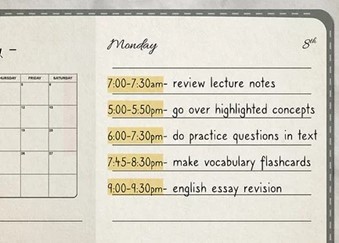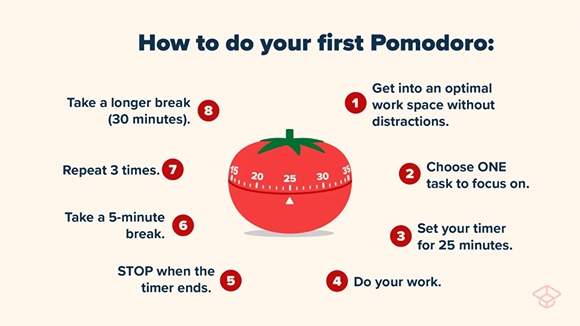How to Create a Personalized Study Plan
One of the most valuable lessons I’ve learned as a teacher is that every student thrives with a well-organized, personalized study plan. A tailored study plan doesn’t just help students stay on top of their work; it empowers them to succeed by fostering discipline, time management, and clarity.
By focusing on their individual strengths and learning styles, students can approach their studies with confidence and achieve their full potential.
Part 1: Reasons and Benefits of a Study Plan
Creating a study plan offers numerous benefits that can significantly impact students’ academic success. First and foremost, a study plan helps students manage their time effectively. Time is one of the most precious resources for students. Without a structured approach, wasting it or feeling overwhelmed is easy. A study plan allows students to allocate time for each subject by breaking down tasks into manageable chunks, ensuring no area is neglected.
Another reason for having a study plan is that it builds a sense of accountability. Students are more likely to follow through When they know what they need to do and when they need to do it. This structure encourages consistency and reduces procrastination.
Furthermore, a personalized study plan caters to individual strengths and weaknesses. Some students might need more time for complex subjects, while others may require more review for memorization-based topics. A tailored plan ensures that each student’s needs are addressed, leading to improved study skills and overall performance.
Finally, having a clear study schedule reduces stress. Students often feel anxious when they’re unsure how to tackle their workload. A well-organized plan gives them a roadmap, helping them feel more in control of their studies.
Part 2: 6 Steps and Important Elements for Making a Study Plan
Now that we’ve established why a study plan is essential let’s dive into how to make one that works. Here are six steps to guide you in creating an effective and personalized study plan. Also, you can use certain types of plans, such as the Pomodoro Study Method, PDSA, PDCA, etc.
Step 1. Assess Your Goals and Prioritize
The first step in creating a study plan is to set clear, achievable goals. Whether aiming for high grades in specific subjects or improving time management, defining your objectives gives your plan a purpose. Start by listing all the subjects and topics that require attention. Rank them by priority based on upcoming exams, deadlines, or personal difficulty.
For example, if you have a critical math exam next week, this should be at the top of your list. Don’t forget to consider both short-term and long-term goals, such as preparing for a final exam versus completing daily homework.

Step 2. Break Down Your Tasks
Once your goals are clear, break them down into smaller tasks. This is where many students go wrong—setting too vague or large tasks, like “study history.” Instead, break it down into more specific, actionable items like “read chapter 3 of the history book” or “review key dates in World War II.”
This step ensures that your study plan is practical and achievable. It’s easier to follow through on small, specific tasks than broad, overwhelming ones. It also helps you track your progress more efficiently.
Step 3. Design a Flexible Schedule
Now comes the core of your plan: the study schedule. Start by mapping out your weekly routine, accounting for school hours, extracurricular activities, meals, and sleep. Once these fixed commitments are clear, you can slot in your study sessions.
One of the best ways to organize your study time is to follow the plan-do-check-act cycle. This involves planning your tasks, executing them, reviewing your progress, and making adjustments as necessary.
A good study schedule example could include two hours of homework every evening, 30 minutes of reviewing notes from the day, and an extra weekend hour for more challenging subjects. The key is to stay flexible—allow room for adjustments based on how you’re progressing and any unexpected tasks that might come up.

Step 4. Use the Pomodoro Study Method
A popular and effective time management technique is the Pomodoro study method. This method involves studying in short, focused bursts (usually 25 minutes) followed by a 5-minute break. After four sessions, take a more extended 15-30 minute break.
The Pomodoro method is excellent for maintaining focus and avoiding burnout. It helps you manage your time efficiently while staying productive. Incorporating this method into your study plan ensures you maintain concentration without overwhelming yourself.

Step 5. Track Progress and Stay Accountable
Once your plan is in place, monitoring your progress is essential. Keep a log of completed tasks and reflect on what worked and what didn’t. Adjust your study schedule if certain subjects need more attention or are struggling to stick to the plan.
Accountability plays a crucial role in this step. You can hold yourself accountable by sharing your goals with friends, family, or teachers. Regular check-ins with someone else can motivate you to stay on track.

Step 6. Make Time for Rest and Review
No study plan is complete without time for rest and review. Overworking yourself can lead to burnout and diminished productivity. Ensure you schedule breaks, leisure activities, and adequate sleep into your plan.
Equally important is reviewing what you’ve learned. Allocate time each week to go over previously studied material. Reviewing regularly prevents cramming before exams and reinforces what you’ve learned.

Part 3: What Does a Good Study Plan Look Like?
A good study plan is one that is well-balanced, realistic, and adaptable. It includes clear goals, detailed tasks, and structured time for each subject. Moreover, it should incorporate techniques like the Pomodoro study method to maintain focus and productivity.
A compelling study plan also includes flexibility—life is unpredictable, and sometimes things won’t go as planned. A good plan accounts for this by allowing room for changes. Finally, a successful study plan doesn’t just focus on academics but also includes time for relaxation, hobbies, and self-care. It strikes the perfect balance between productivity and well-being.
Conclusion
Creating a personalized study plan is a powerful way to boost academic performance and reduce stress. By assessing your goals, breaking down tasks, using time management techniques like plan-do-check-act, and incorporating balance into your schedule, you’ll be on the path to success. Take the time to build a plan that works for you—and stick to it!





